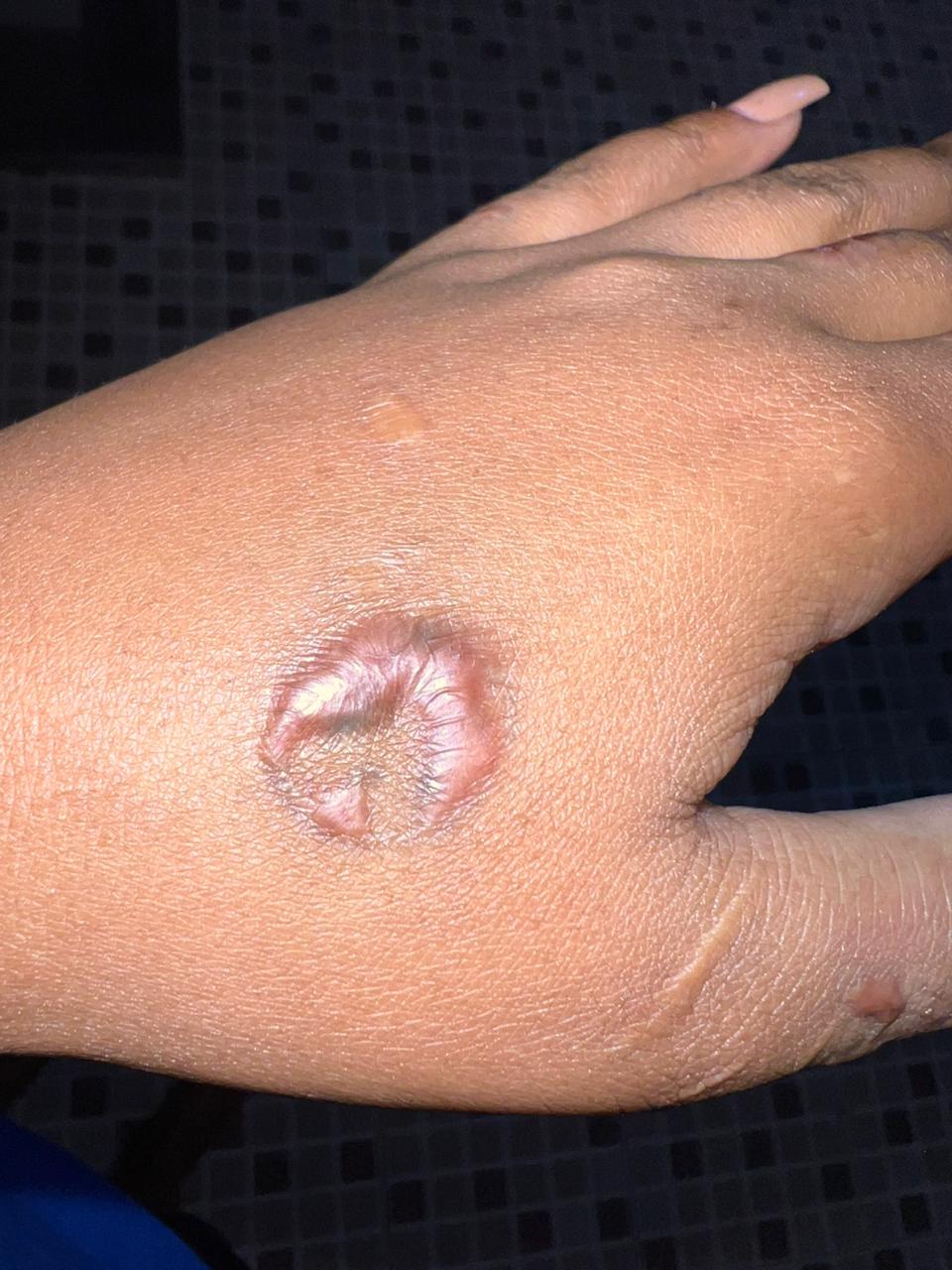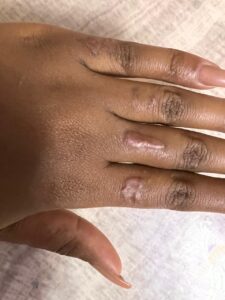

- Blog
-
by Winnie Maina
What is a hypertrophic scar?
Hypertrophic scars and keloids are types of raised, thickened scars that can form after injuries or surgery. A thick elevated scar is known as a hypertrophic scar. Extra connective tissue develops within the initial wound region, which is an aberrant reaction to wound healing. As a result, there is a raised scar. A minor wound to the topmost layer(epidermis) of the skin usually heals quickly. As the wound heals, new skin emerges. Your body responds to deeper wounds in the dermis layer and lower by producing collagen to help heal the wound. Your skin’s collagen is thicker than the rest of the skin. A scar is formed when the tissue becomes thicker and less flexible. The majority of scars are flat. However, your body can produce too much collagen, resulting in a raised scar. This form of elevated scar is referred to as hypertrophic scar.
How can I tell if my scar is hypertrophic?
Scars that are hypertrophic are more common in parts of the body where the skin is stretched, such as the back, chest, shoulders, upper arms, elbows, and other joints. Hypertrophic scars, on the other hand, might appear anyplace on your skin if you’ve had a cutaneous injury or wound. Scar tissue can form as a result of skin injury or wounds caused by trauma, inflammation, burns, or surgical incisions. One to two months after the injury, you may notice hard or thickened elevated skin over your wound site. Irritation, itching, soreness, and/or pain may occur as a result of the scar. Scars typically form on your back, chest, shoulders, upper arms, and the skin around your joints.

What is a keloid?
A keloid is a scar that is thick and raised. It can appear anywhere there is a skin injury, although it is most common on the earlobes, shoulders, cheeks, and chest. Any type of skin damage, such as acne, an injection, bites, burns, hair removal, body piercings, and even minor scrapes and bumps can cause keloid formation. Keloids can also appear for no apparent reason.
What are the signs of a keloid?
Keloid scars are thick and uneven, usually on the earlobes or shoulders, cheekbones, or middle chest. Shiny, hairless, raised skin that varies in size depending on the extent of the initial lesion and when the keloid stops growing. Itching and discomfort due to a variety of textures ranging from soft to stiff and rubbery.
How can I tell the difference between a hypertrophic scar and a keloid?
The degree to which the scar spreads over the initial lesion is the most noticeable distinction between hypertrophic and keloid scars. In hypertrophic scars, the extra connective tissue(thick skin) that grows within the original wound stays within the hypertrophic scar while the additional connective tissue that grows in keloid scars extends beyond the original incision region.
Early therapy can help in the management of a keloid or hypertrophic scar. Consult a physician as soon as you notice any of the above symptoms. It is still feasible to treat long-standing keloids and hypertrophic scars, and it only necessitates a diagnosis and the development of the optimal treatment strategy.

John Maina
atI was surprised to learn about these types of scars, and it definitely challenged my assumptions on this issue.
Kimina Musyoki
atVery insightful blog,presence of scars is a major influence on esteem issues.